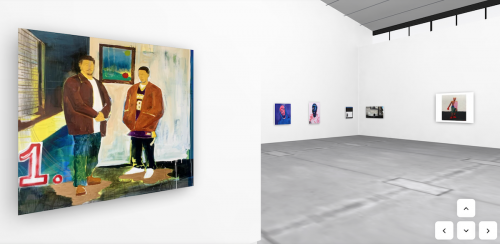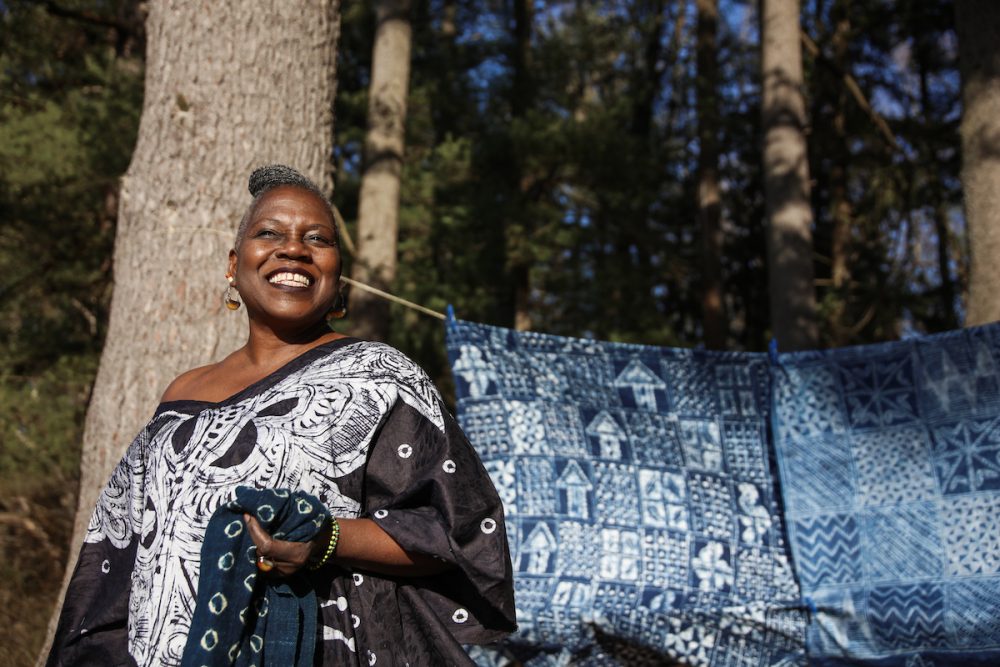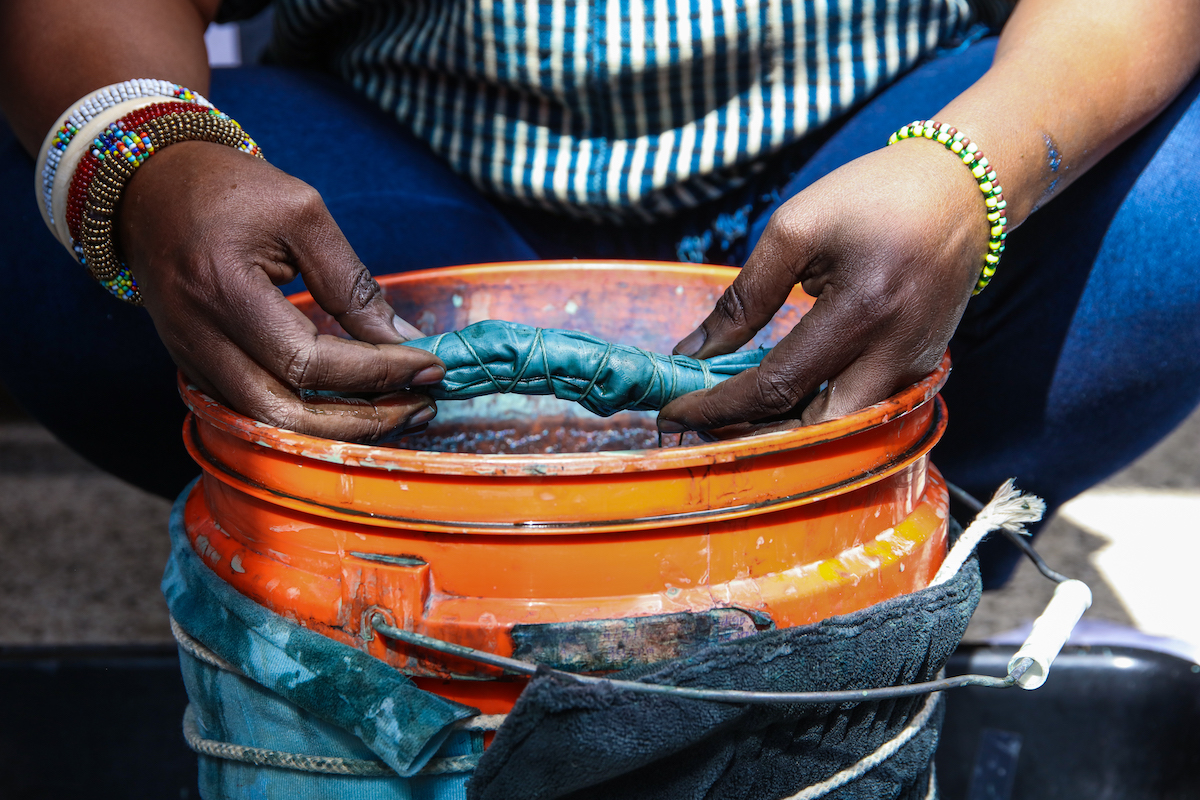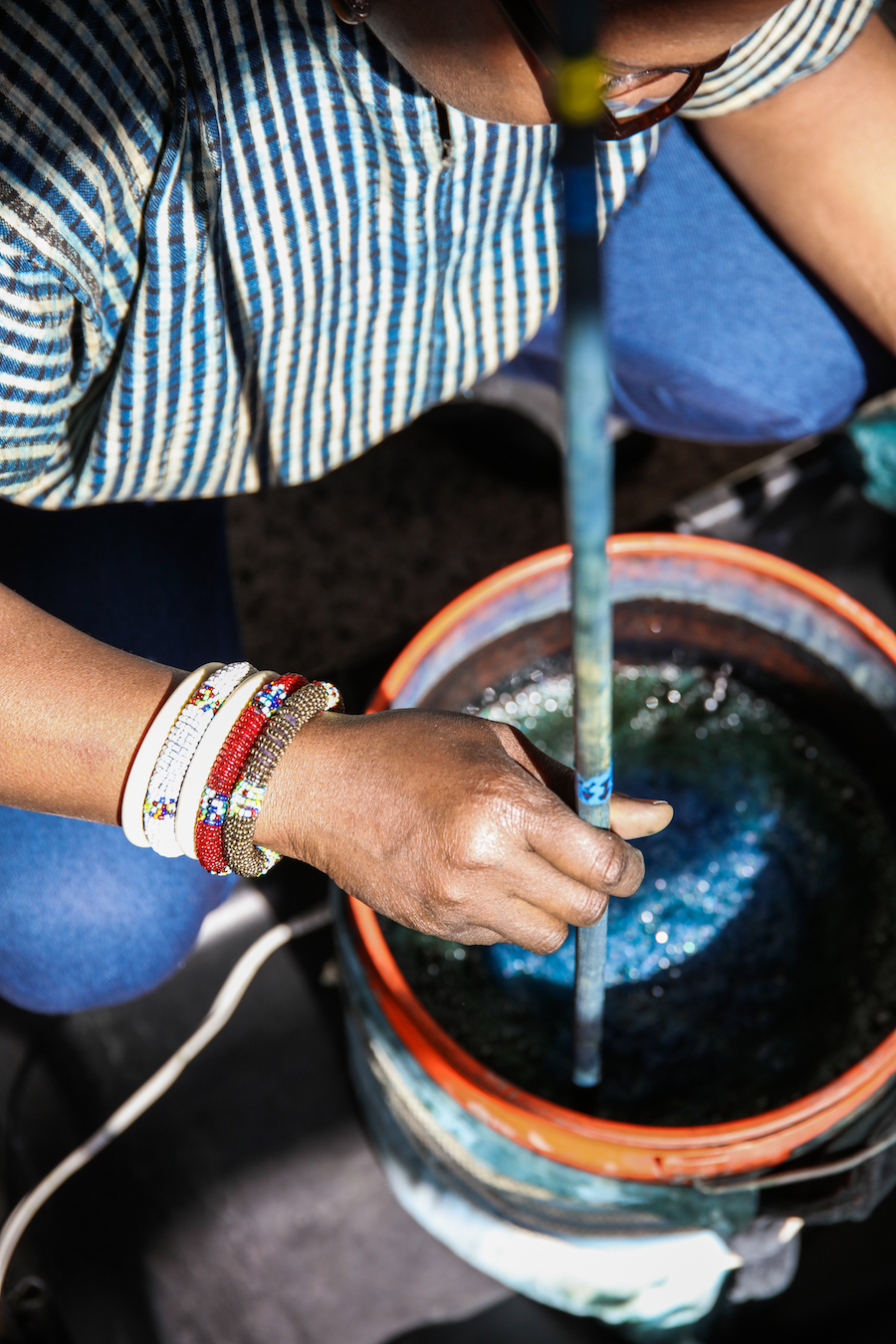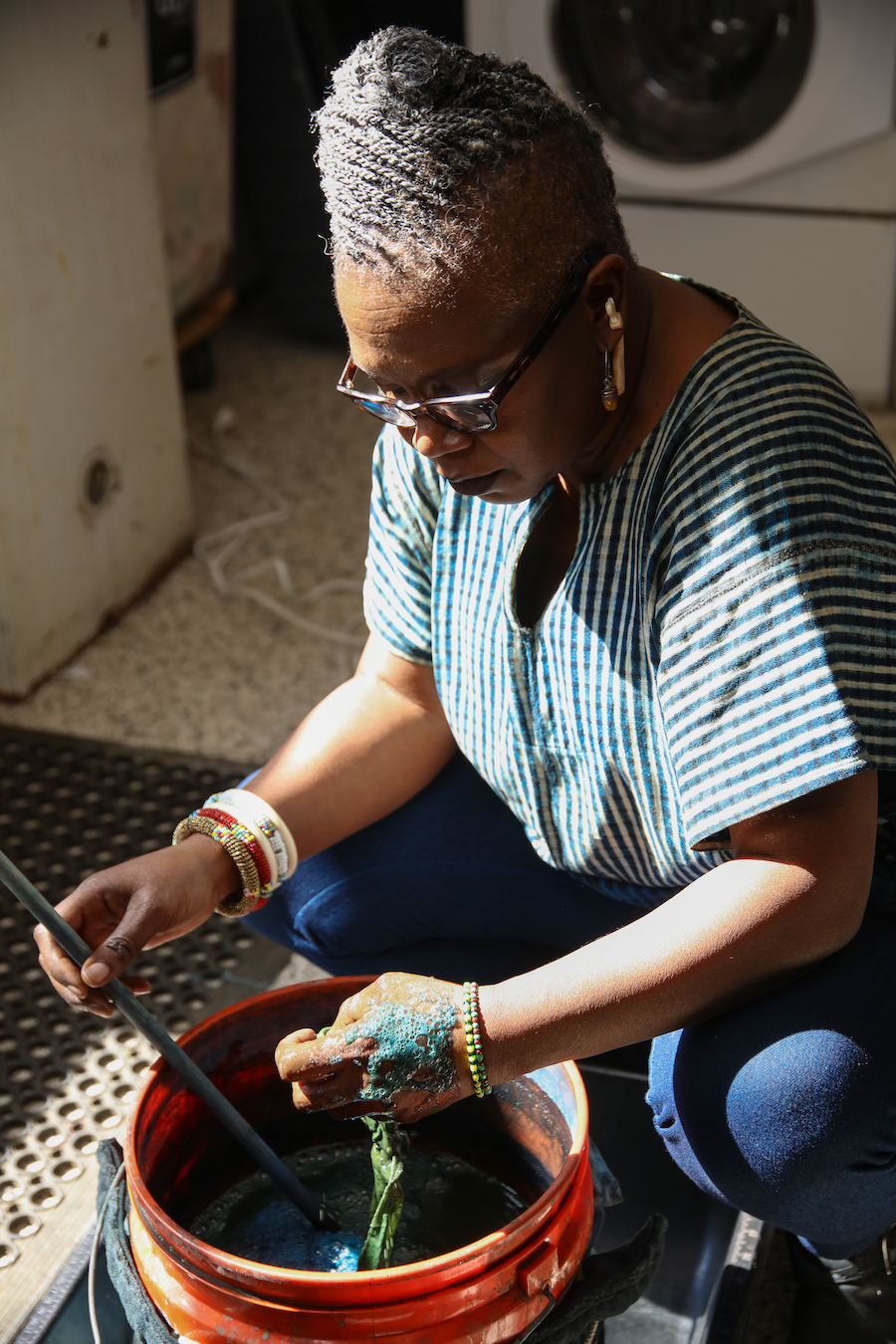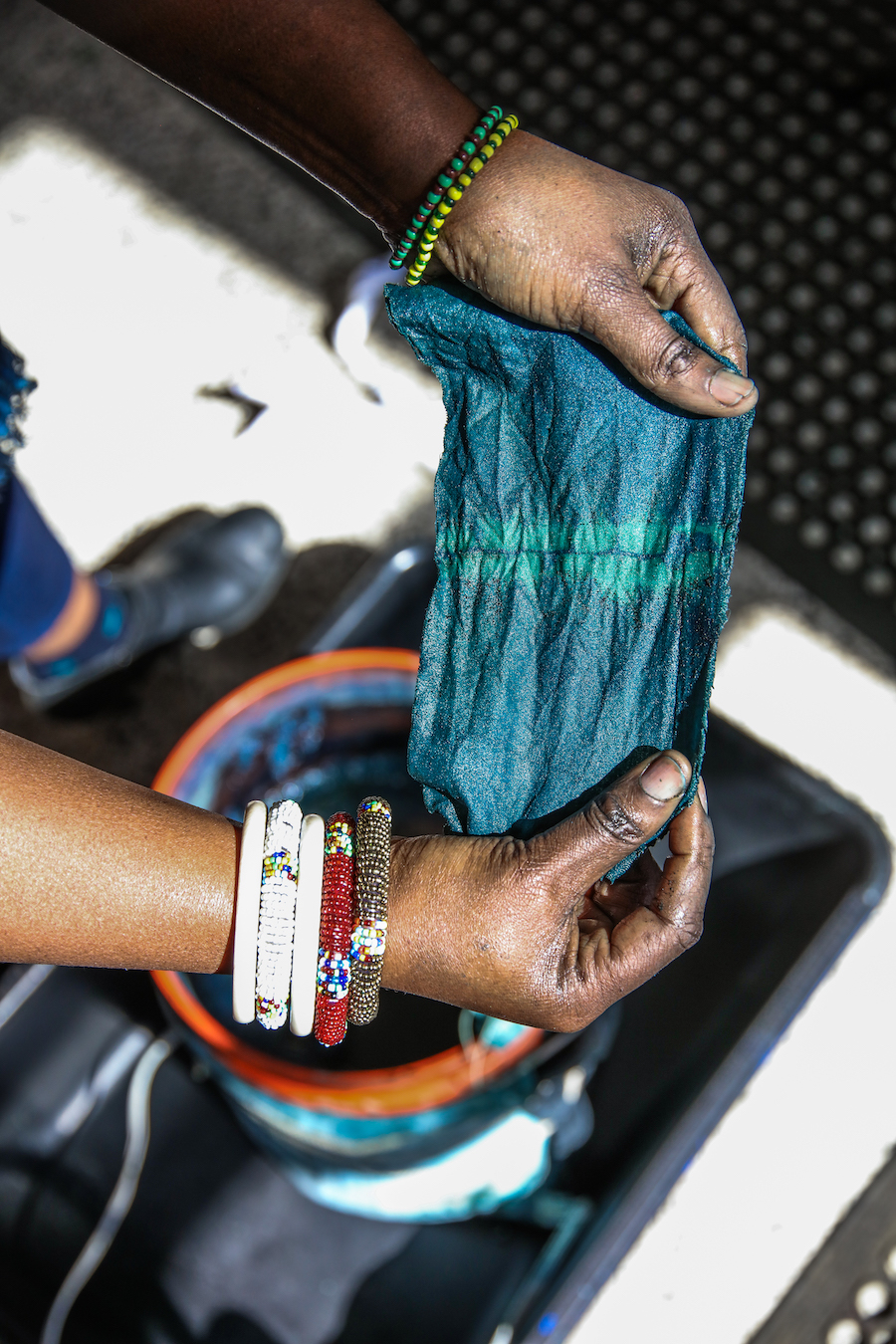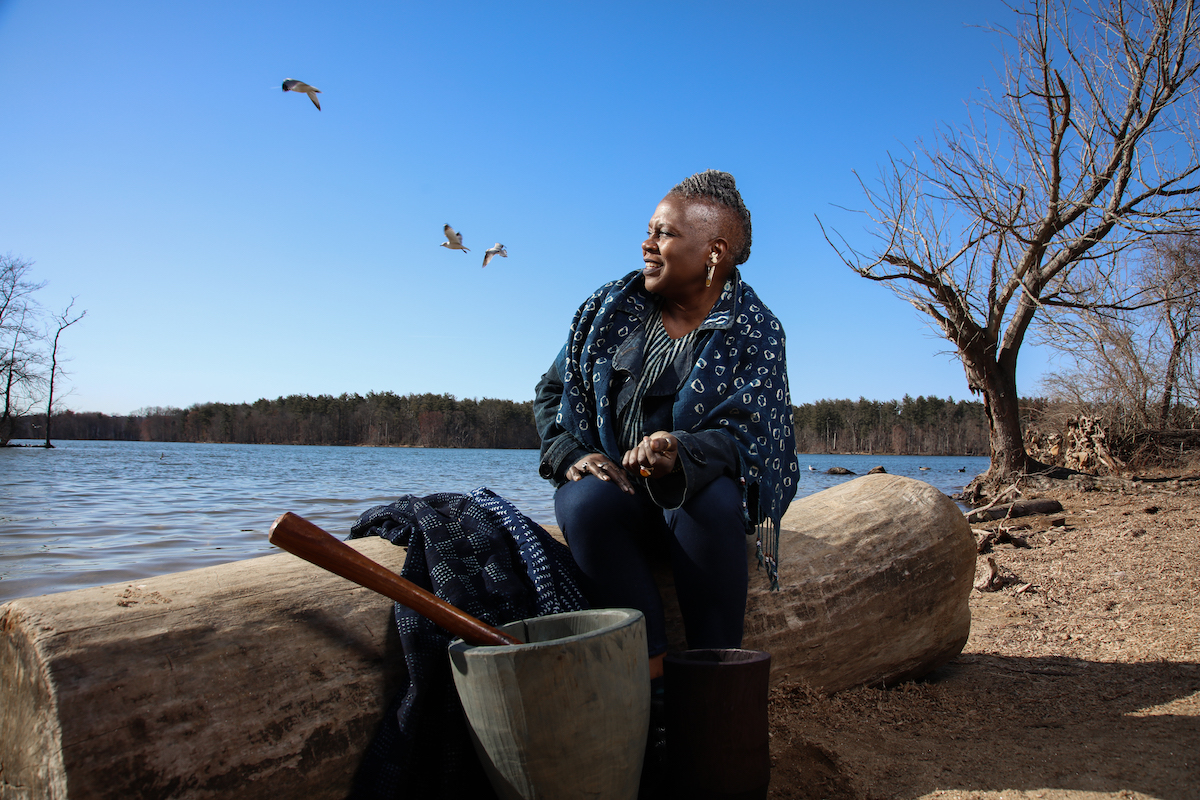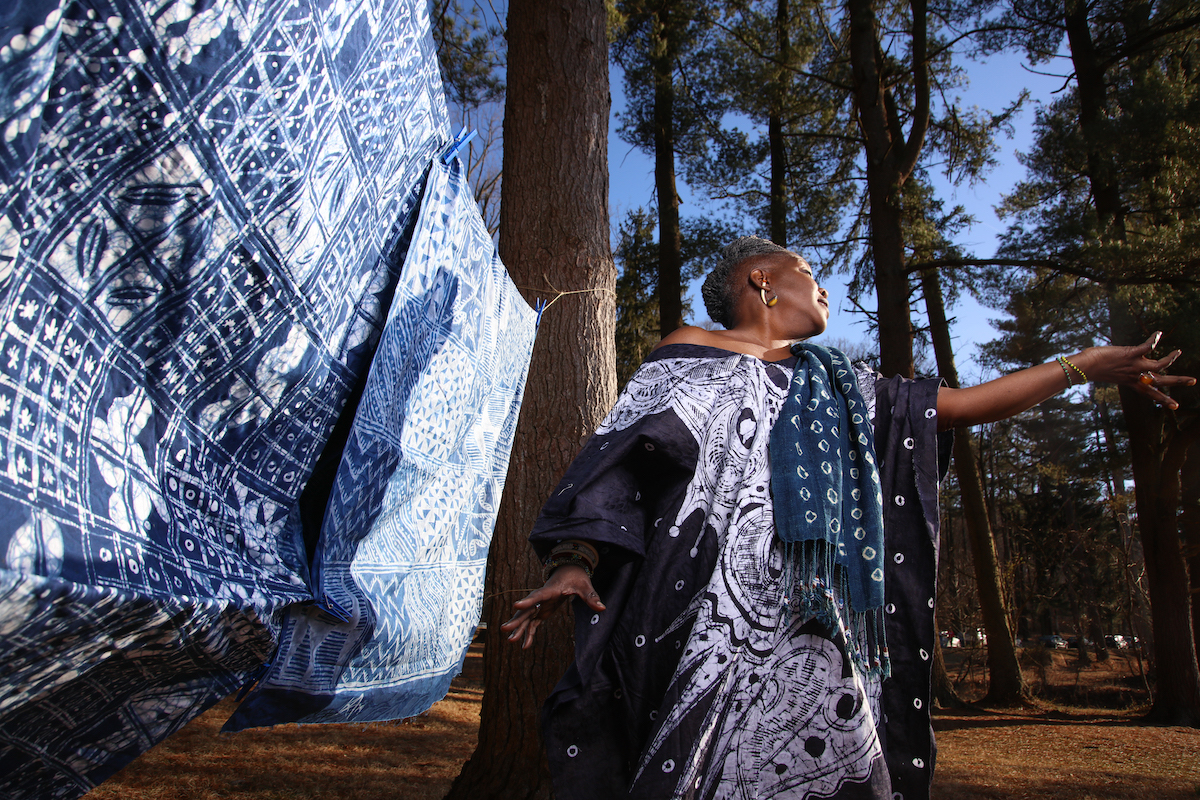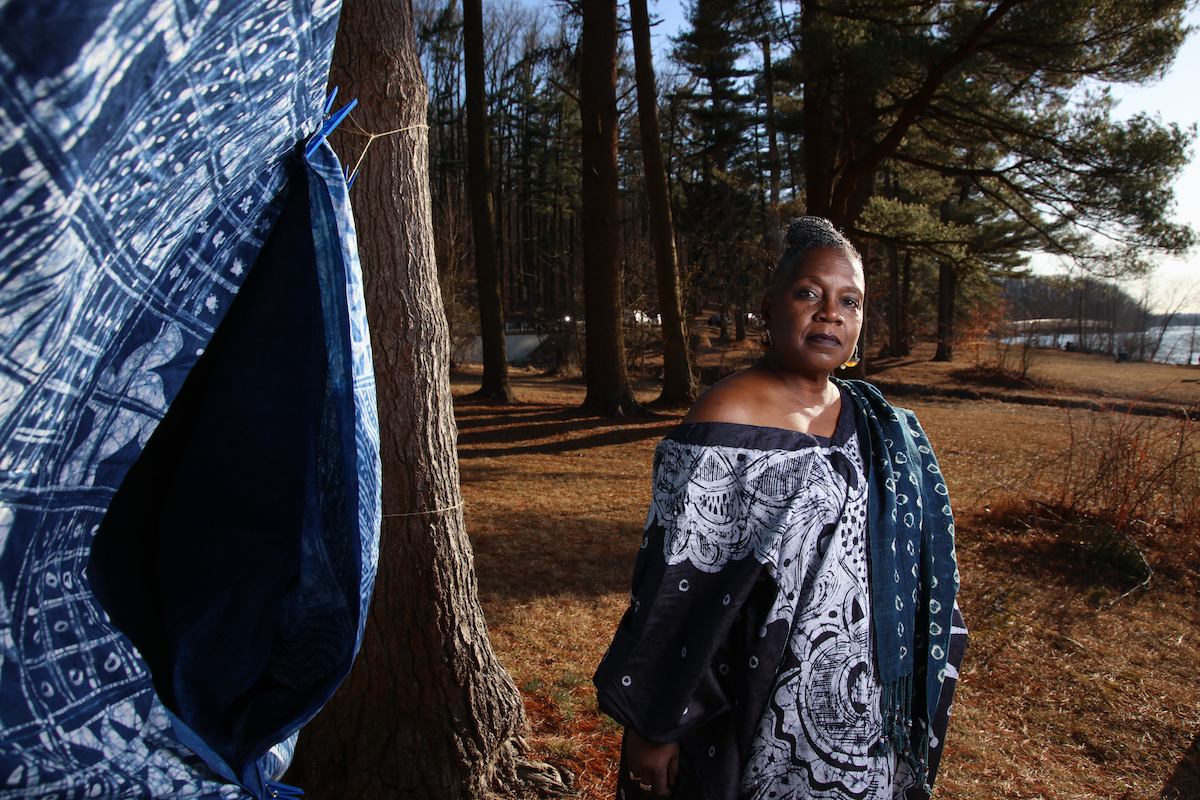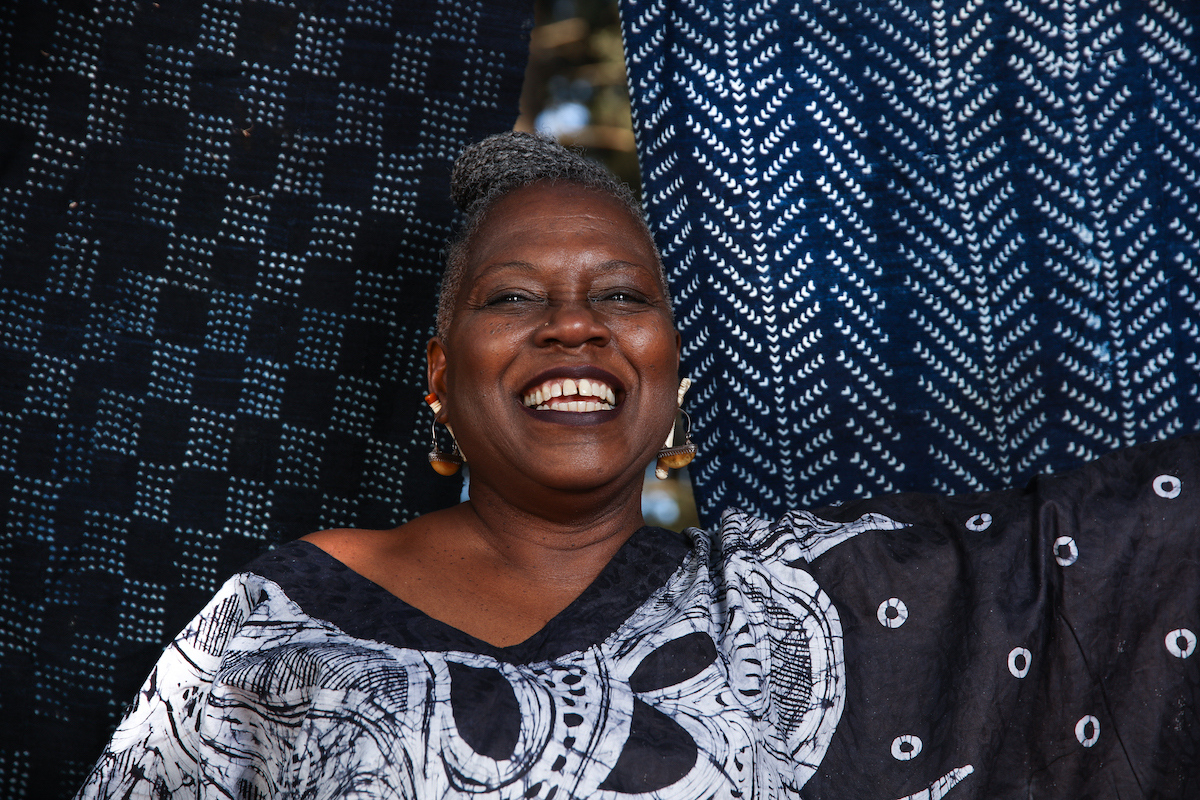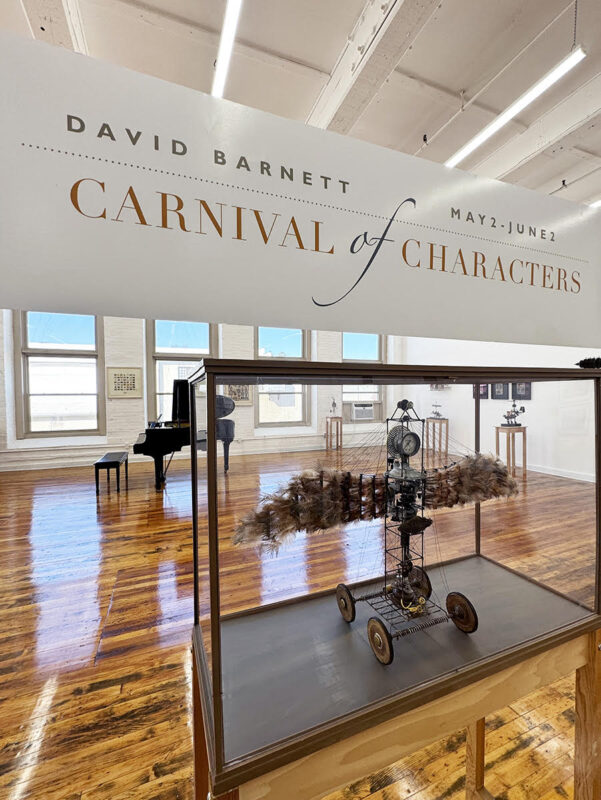In 1996, driven by wanderlust and a deep desire to find authentic costumes for her troupe, The Sankofa Dance Theater, choreographer and creative director Kibibi Ajanku journeyed to The Gambia in West Africa. During her travels she observed and fell in love with traditional indigo dyeing: rows of deep vats filled with natural resins expertly aged to create transcendental hues for àmùrè (fully dyed), àdìre oníkó (tied resist/batik) and àdíre alábáré (stitch resist) textiles and fabrics. “That was the first time that I saw cloth come out of the vat as green and turn blue as it began to oxidize,” said Ajanku. “I will never forget that moment. It was so magical and so inspirational.”
When I visited Ajanku to observe her process, she spoke about the vat of dye as if it were a living organism. “It’s not happy right now,” Ajanku sighed as she stirred the deep blue substance with a long stick, pausing occasionally to review data logs that documented sucrose feeding times, pH level measurements, and color profile evaluations.

